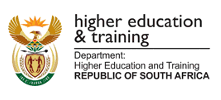The Labour Market Intelligence Partnership's research agenda is organised in six priority areas. Each research area has a leading subject specialist or team at its helm and a unique objective, design and methodology.
Scroll to review all LMIP research reports about Understanding changing artisanal occupational milieus and identities
Learn more about research leader Dr Angelique Wildschut of the Human Sciences Research Council
Context and research objectives
Many would argue that artisanal occupations are in crisis in our country. There are widespread claims around the shortage of artisans and the ability of our technical and vocational education and training system to produce the required quantity and quality of artisans is under question.
However, while all agree that increased artisan development is important, there is substantial disagreement on the scale and nature of demand for these skills.
In other words, we know it is important to foster and grow the systems of artisan skills production (Kruss et al. 2012), but we lack clarity on the nature of the skills required.
How many artisans exactly are needed, in which areas, at what levels and in which configurations within differentiated workplaces?
Our lack of certainty around the nature of demand is exacerbated by confusion around the nature of the supply of artisan skills.
There appears to be confusion and inadequate knowledge in relation to the varied routes to artisanal skilling and the extent of the contributions made by the different routes, as well as poor understanding of the issues underlying quality and success in the production of qualified artisans.
These factors contribute to widespread assertions that artisan and mid-level skilling continues to be a key gap in the post-school sector (Kraak 2012).
Within this context, the issue of artisans was identified as a key focus area for the LMIP.
However, the playing field has changed and our responses to address artisanal skills production and retention challenges have to as well.
Over the last three decades, there have been extensive changes to the nature of work, the increasing impact of technology, changes to work organisation, and new fields and forms of practice are emerging.
In addition, our country has a complex history of vocational education and training (VET), characterised by gender, race and language inequalities.
Not only do such aspects hold implications for our understanding of artisanal work, but how can and should we plan for artisanal skills in such shifting occupational contexts?
Design and methodology
It is clear that improving our ability to plan for artisanal skills requires a better understanding of the contextual issues that impact on the extent, nature and location of demand and supply of artisanal skills.
Critical questions to direct such an endeavour would thus be: How have historical patterns shaped the nature of artisanal training and work today? How can planning for artisanal skills respond to the changing nature of work and the division of labour in the workplace? How can planning be responsive to innovation and change?
Towards better understanding such a complex and multi-layered context and the questions emerging from it, three projects were developed to investigate:
1. The underpinning economic and political history (led by Prof. Nhlanhla Mbatha).
2. Changes to the nature of artisanal work and its occupations (led by Dr Angelique Wildschut).
Changing intermediate knowledge bases and the resulting implications for future artisanal work and preparation (led by Dr Jeanne Gamble).
This area of the LMIP research agenda is entitled 'Understanding changing artisanal occupational milieus and identities' and it argues that changes to the nature of work critically affect skills demand and supply and so we need to focus more effort on understanding this dimension of our labour market.




